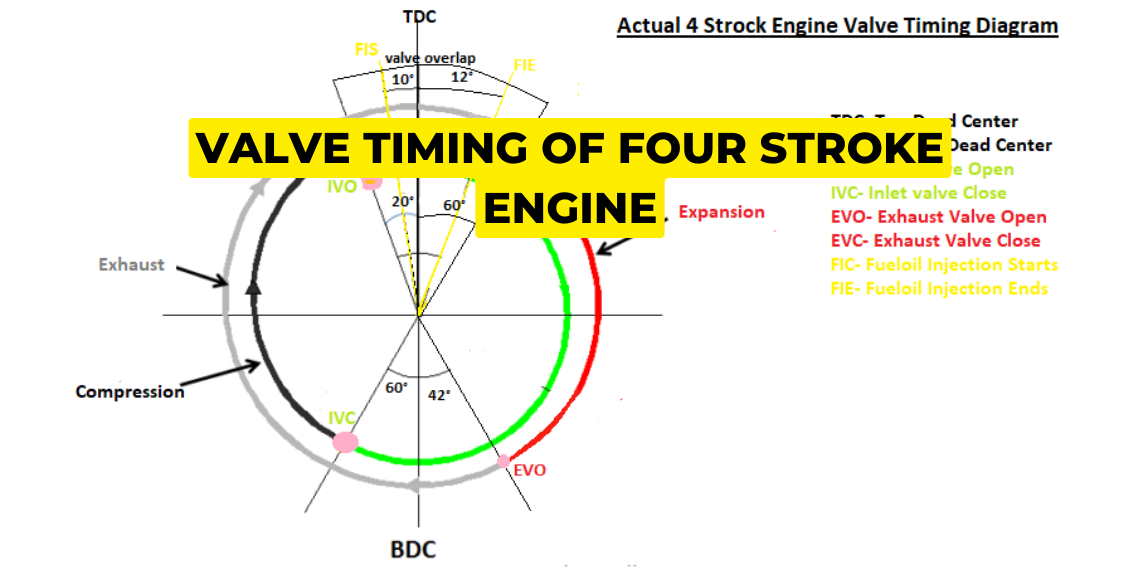Valve timing diagram of four stroke engine

1st process is that inlet valve opens 20° before TDC to compensate for the slow opening of the valves and also for a better post-scavenging process (i.e.,entering of fresh air and removal of exhaust gases).
2nd process is that piston reaches BDC
3rd process is that inlet valve closes at 60° after BDC. Inlet valve closes late so that more air can be sucked into the cylinder. More air leads to more efficient burning of fuel.
4th process is that the compression stroke starts and at 10° before TDC fuel injection starts, so that fuel can fill the whole area.
5th process is that the piston reaches TDC and ignition takes place and power is generated.
6th process is that fuel injection ends at 12° after TDC.
7th process is that exhaust valve opens at 42° before BDC so that blown down of exhaust gases takes place(1st step of scavenging)
8th process is that the piston reaches BDC.
9th process is that scavenging is going on and the piston reaches TDC.
10th process is that exhaust valve closes at 60° after TDC.
What is valve overlapping?
Valve overlapping refers to a situation in internal combustion engines where both the intake and exhaust valves are open at the same valve timing during the engine’s operation. This occurs during a phase known as valve overlap, which is a crucial aspect of engine timing.
In a typical four-stroke engine, each cylinder has intake valves and exhaust valves. The intake valve allows the air-fuel mixture to enter the combustion chamber, while the exhaust valve allows the burned gases to exit. The opening and closing of these valves are controlled by the camshaft, which is synchronized with the rotation of the engine. During the exhaust stroke, the piston moves upward, pushing the burned gases out of the cylinder. As the piston nears the top of the exhaust stroke and the exhaust valve begins to close, the intake valve starts to open. This period when both valves are partially open is known as valve overlap. Valve overlap serves several important purposes.
Firstly, it helps to scavenge the remaining exhaust gases from the cylinder by utilizing the momentum of the outgoing gases to draw in fresh air-fuel mixture. This improves cylinder filling efficiency and promotes better combustion.
Note:
If you want to learn more about this topic, we suggest checking out our Combo package with the given link https://www.merchantnavydecoded.com/courses/c/ . It’s a great way to dive deeper into the subject through video explanations. This package covers all the important details and presents them in an easy-to-understand format. Watching the videos will help you grasp the topic better and make learning more enjoyable. So, we highly recommend giving our Combo package a try to enhance your knowledge on the subject.
Disclaimer :- The opinions expressed in this article belong solely to the author and may not necessarily reflect those of Merchant Navy Decoded. We cannot guarantee the accuracy of the information provided and disclaim any responsibility for it. Data and visuals used are sourced from publicly available information and may not be authenticated by any regulatory body. Reviews and comments appearing on our blogs represent the opinions of individuals and do not necessarily reflect the views of Merchant Navy Decoded. We are not responsible for any loss or damage resulting from reliance on these reviews or comments.
Reproduction, copying, sharing, or use of the article or images in any form is strictly prohibited without prior permission from both the author and Merchant Navy Decoded.




Nice blog